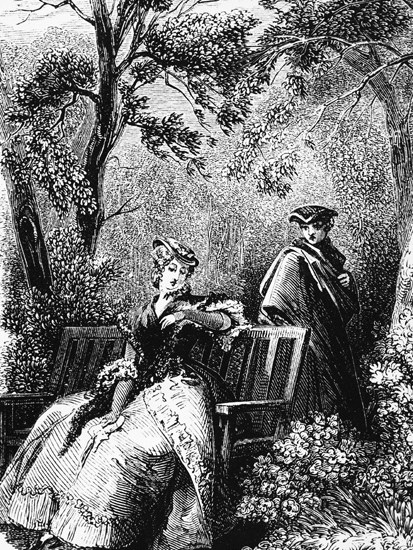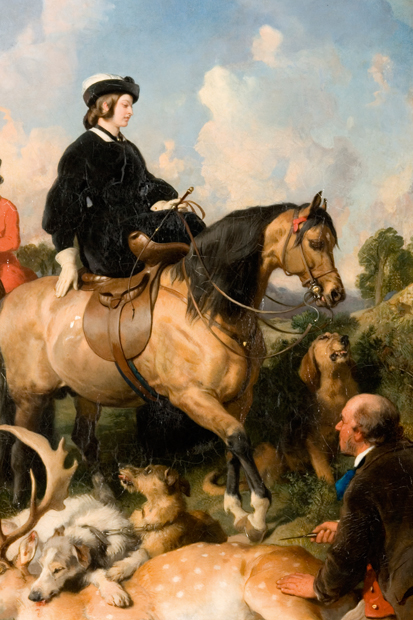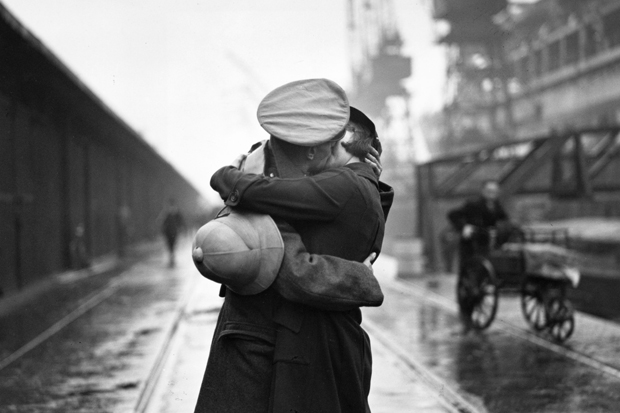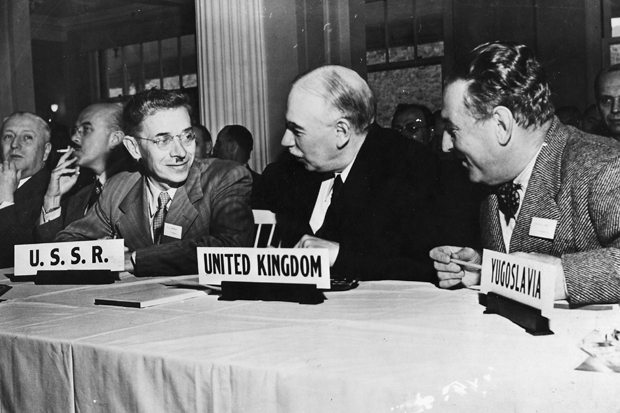You usually know where you are with a book that promises the story ‘would violate the laws of plausibility’ if it appeared in a novel, and that’s in deep trouble. In the case of How to Ruin a Queen, however, this is a boast with a surprising amount of substance to it. You could make it up — just about — but you’d probably have a very sore head afterwards.
In 1786 Cardinal Louis de Rohan, Grand Almoner of France and scion of one of the country’s leading families, went on trial accused of having stolen a 2,800-carat diamond necklace. This was serious enough, but what was far more serious was that he was accused of having appropriated the Queen’s name to do so.
Rohan furiously protested his innocence — as well he might, considering he had been the victim of one of the most audacious cons ever perpetrated. The mastermind behind it was a woman called Jeanne de Saint-Remy. Jeanne’s father was descended from an illegitimate son of the Valois King Henry II, but any inherited money had long since disappeared. As a child she was reduced to begging, proclaiming her antecedents in a shrill voice in an attempt to play on people’s sympathy.
On returning to the family hovel, her mother would beat her with unflagging vigour, sometimes with a vinegar-soaked rod wrapped in nettles. Jeanne’s prospects were looking somewhere between bleak and non-existent when one day she saw a carriage go by and swung into her usual patter. Astonishingly, the occupant — a local count — believed her, and she was soon ensconced in his château with a pension from the King.
Alas, the pension wasn’t enough to keep Jeanne in the style she felt she deserved and she began casting about for ways to boost her income. Her eye soon fell on Prince Louis de Rohan. As well as being a prodigious shagger, Rohan was a colossal snob. But while serving as French ambassador in Vienna, he had unwisely made some disparaging remarks about the Empress Maria Theresa.
It was almost impossible not to make disparaging remarks about Maria Theresa — she had once established a Chastity Commission empowered to arrest anyone suspected of being an opera singer. But unfortunately for Rohan his remarks got back to Maria Theresa’s daughter, Marie Antoniette. When she married Louis-Auguste in 1770, she resolved to have nothing to do with him.
All this was agony to Rohan, who wanted nothing more than to insinuate himself into the new queen’s affections. His desperation gave Jeanne her big idea. She began to pass on letters, purportedly from Marie Antoinette, telling Rohan that she was really crazy about him but just couldn’t show it for fear of infuriating the King.
Rohan was hooked. He wrote back in similar vein and was soon engaged in a passionate, if entirely one-sided correspondence. Then Jeanne told him that the Queen wanted to buy a diamond necklace and would like him to act as an intermediary. The now-besotted Rohan insisted on meeting the Queen to discuss the transaction, and so Jeanne arranged for a Marie-Antoinette lookalike to linger coyly in the undergrowth in the park at Versailles.
The meeting was such a success that immediately afterwards Rohan went round to the jewellers and bought the necklace, using his own money for the down payment. He then lugged it back to Versailles — it was the size of a piece of chainmail — and gave it to Jeanne, who kindly volunteered to pass it on to the Queen.
Rohan’s first inkling that something might be amiss came when Marie-Antoinette, who continued to treat him with withering disdain in public, failed to wear the necklace. He consoled himself that maybe she just liked to put it on in private, but by now the worm of doubt had entered his soul. He hired a graphologist to look at the letters he had received, andwas appalled to learn that the writing bore no resemblance to Marie Antoniette’s.
When the King heard what had happened, Rohan was arrested, and so was Jeanne. Their trial, not surprisingly, was a sensation. In London, a tavern in St James charged customers five shillings just to look at a portrait of Jeanne. Eventually Rohan was acquitted, but Jeanne was found guilty and sentenced to be birched and branded.
She died in 1791, after throwing herself out of a window. By then, of course, revolution had swept through France. Louis was guillotined in 1793 and Marie Antoniette followed him nine months later, apologising to the executioner for treading on his foot before laying her head on the block.
It’s a hell of a tale and Jonathan Beckman gives it all the verve and swagger it deserves. Occasionally, his figures of speech go a bit haywire, as in ‘Nicolas had so far displayed the tact of a thundercloud.’And I’m not sure about ‘The minister was as unresponsive as a wooden leg’ either. My own wooden leg, for instance, does everything I tell it to.
But in an odd sort of way a story as rich as this calls for some densely fruited prose. I read it with fascination, delight and frequent snorts of incredulity — and I strongly suspect you will too.
Got something to add? Join the discussion and comment below.
Get 10 issues for just $10
Subscribe to The Spectator Australia today for the next 10 magazine issues, plus full online access, for just $10.
Available from the Spectator Bookshop, £17 Tel: 08430 600033
You might disagree with half of it, but you’ll enjoy reading all of it. Try your first month for free, then just $2 a week for the remainder of your first year.














Comments
Don't miss out
Join the conversation with other Spectator Australia readers. Subscribe to leave a comment.
SUBSCRIBEAlready a subscriber? Log in